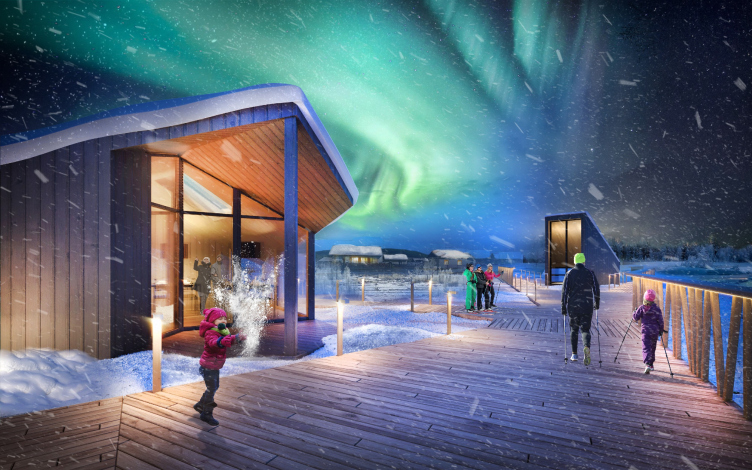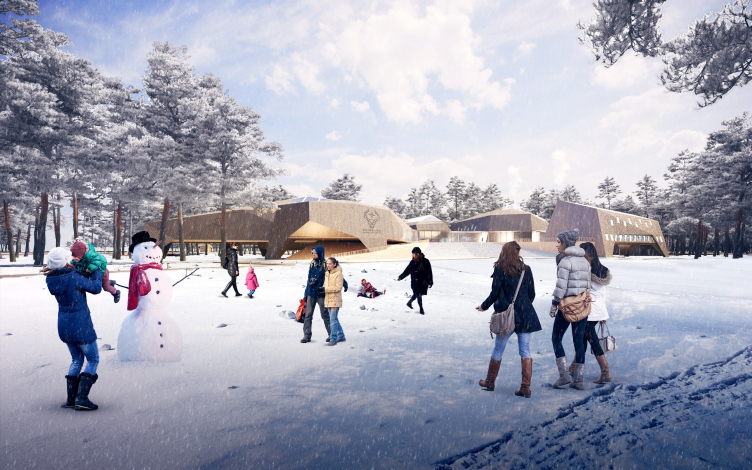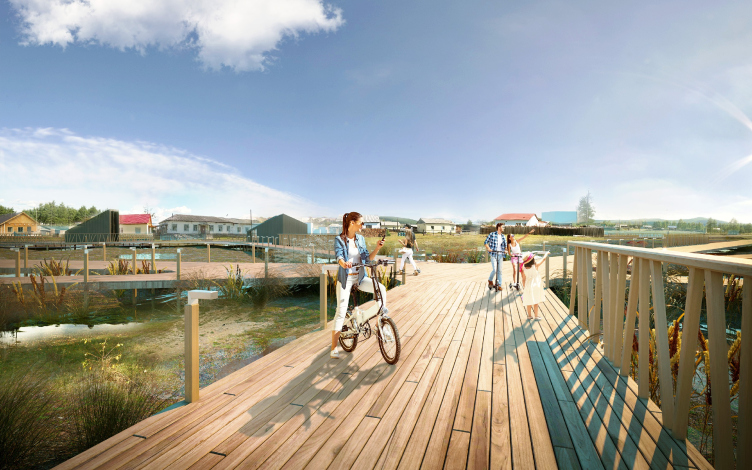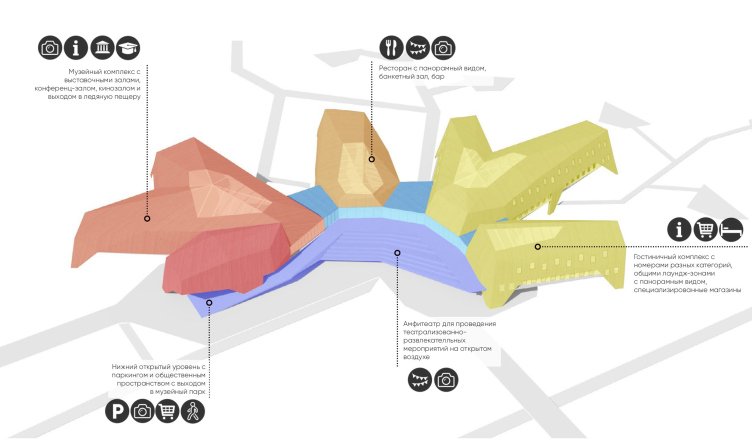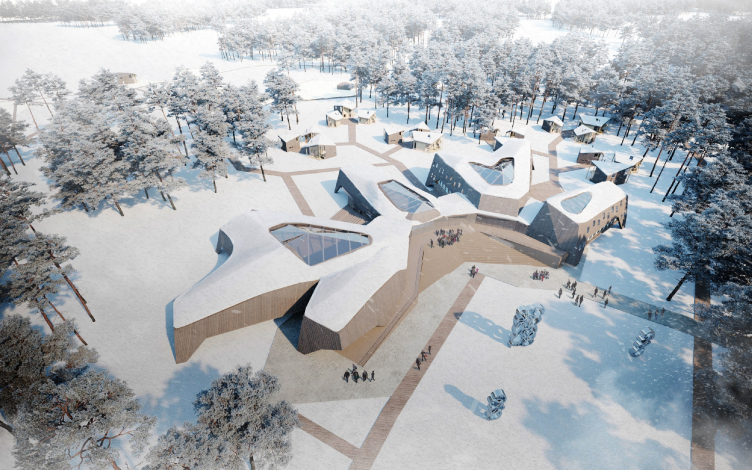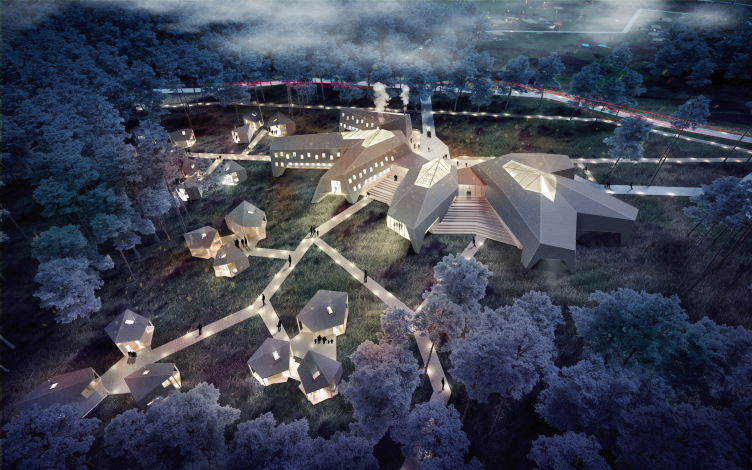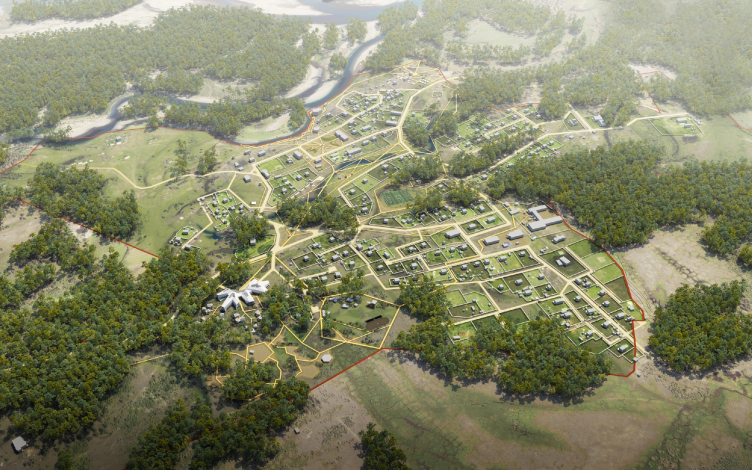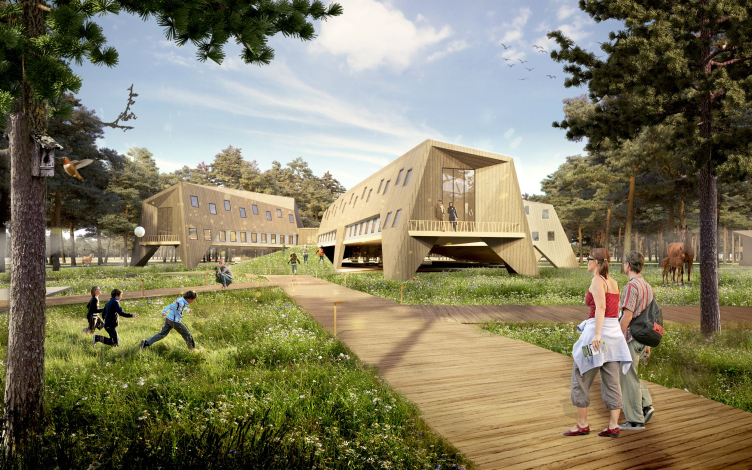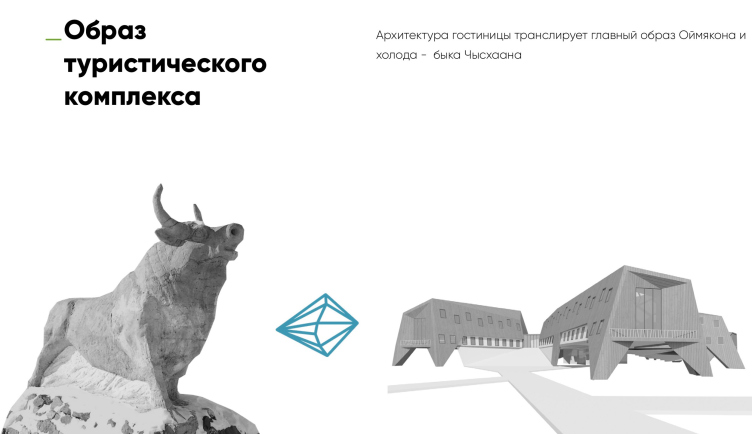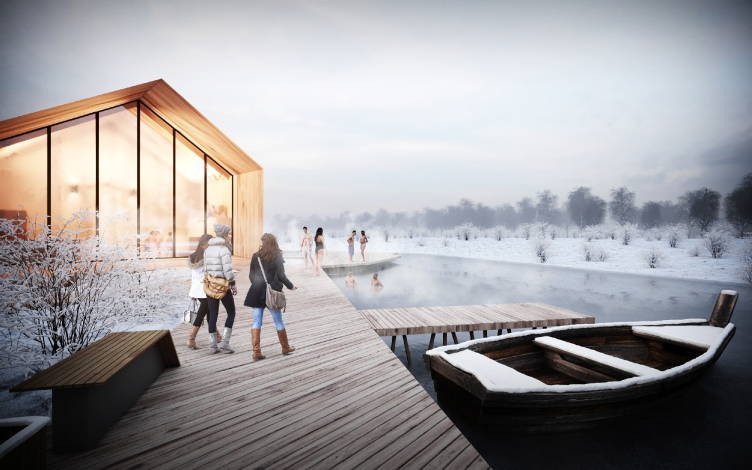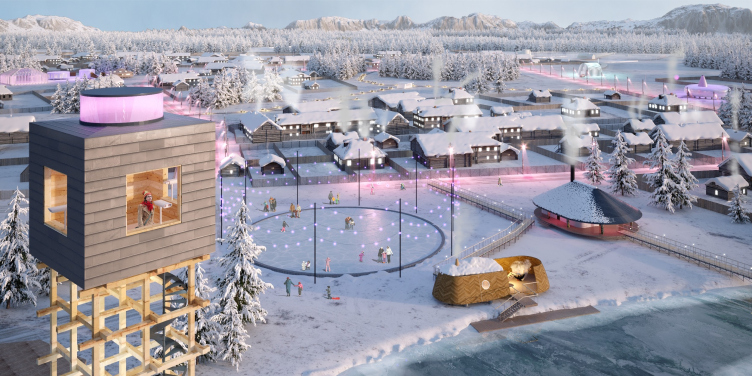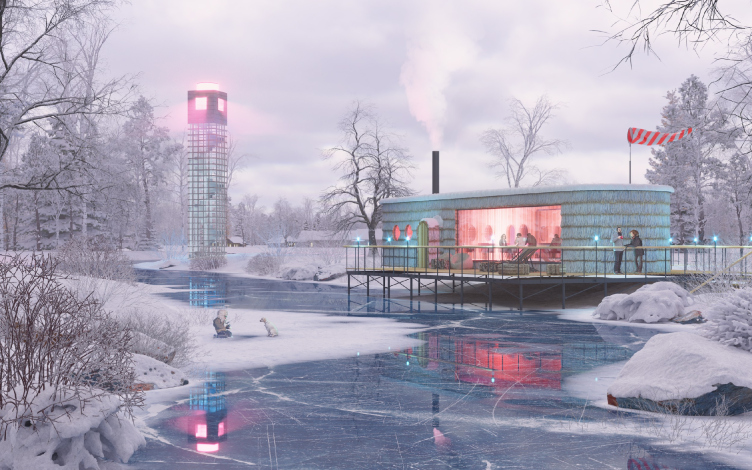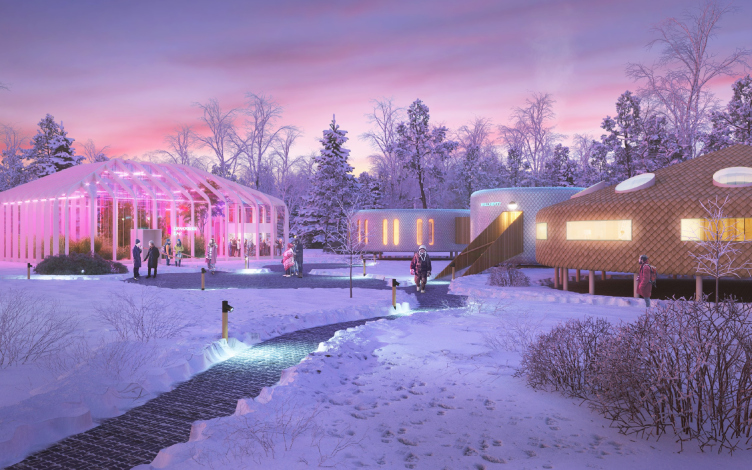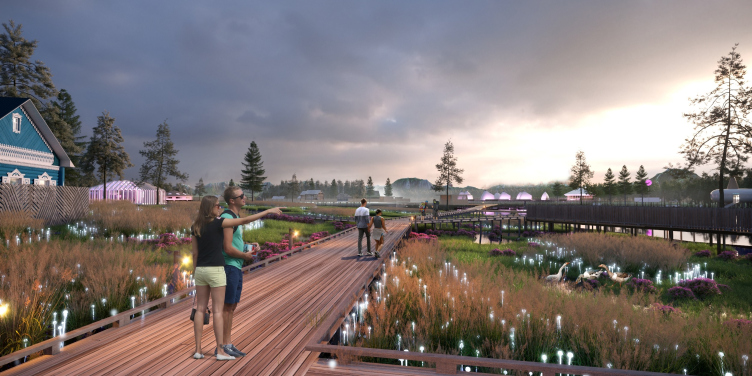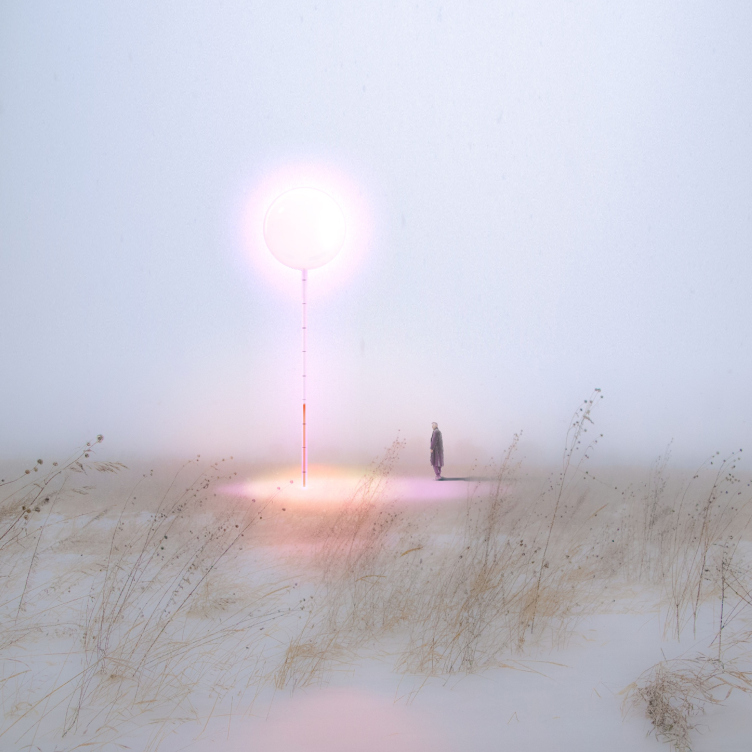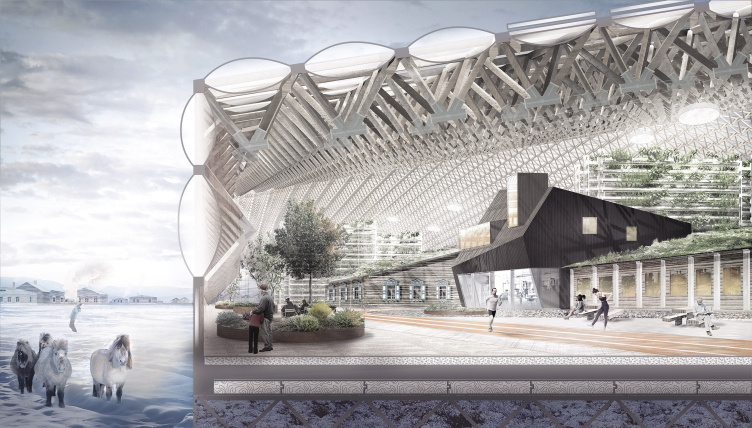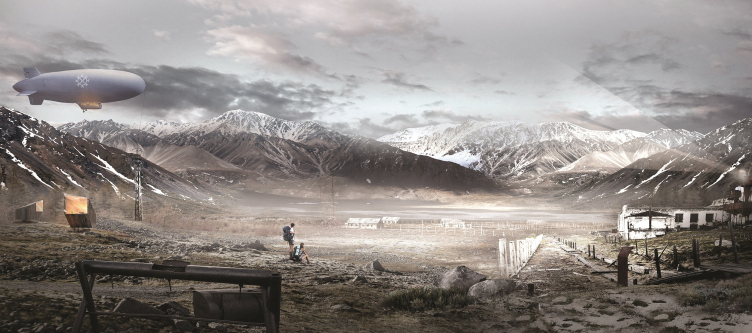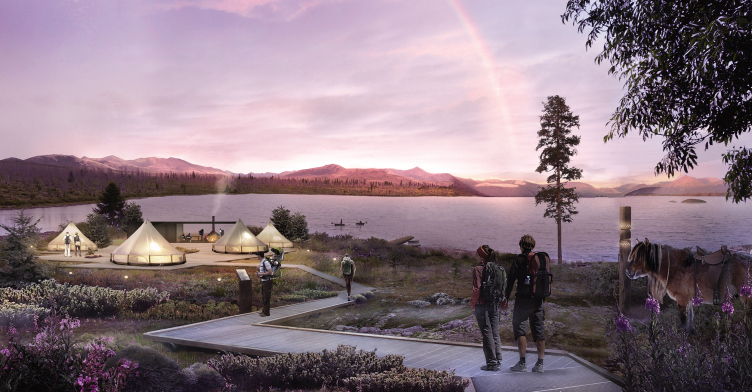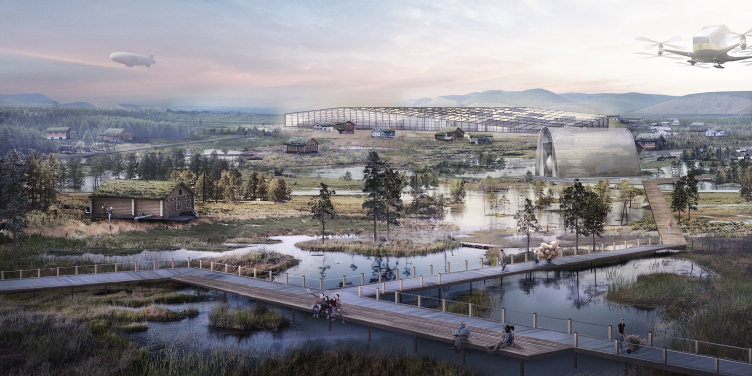The competition for creating a tourist cluster in Oymyakon was announced in May this year. This settlement is the famous “cold pole” because they put on record the lowest temperature in the northern hemisphere here – -71,2 °C. The winter – meaning, the time when the temperature drops below the freezing point – lasts nine months a year here. The extreme nature of Oymyakon attracts tourists from all over the world, but now 80% of applications get turned down because of its underdeveloped infrastructure. That’s why the contestants were to present ideas that would help the Yakut township turn into a full-fledged tourist center.
The competition was won by the consortium consisting of Moscow’s ASADOV architects, the Yakut architectural firm LSTK-Project, the travel company Russia Discovery, and the consulting company KNIGHT FRANK.
The investors are expected to be found by 2021; the construction of the first stage is due to begin in 2022-2023. The estimated cost of the project is 1 billion rubles.
Winner: AB ASADOV
The leader of the consortium AB ASADOV, Moscow, KNIGHT FRANK, Moscow/London + LSTK-Project, Yakutsk, Russia Discovery, Moscow
Concept of a tourist cluster in the settlement of Oymyakon, the winning project
Copyright: © Consortium АБ ASADOV + KNIGHT FRANK + LSTK-Project+ Russia Discovery
Concept of a tourist cluster in the settlement of Oymyakon, the winning project
Copyright: © Consortium АБ ASADOV + KNIGHT FRANK + LSTK-Project+ Russia Discovery
The authors of the victorious project proposed a master plan for reforming Oymyakon, which included replacement of all the engineering networks, as well as the construction of a new wooden waterfront, an eco-farm, a bath complex on the river, with a possibility to bathe in an ice hole, and a few theme parks, including the platform for the main Yakut celebration of Ysyakh, art objects, and playgrounds.
Concept of a tourist cluster in the settlement of Oymyakon, the winning project
Copyright: © Consortium АБ ASADOV + KNIGHT FRANK + LSTK-Project+ Russia Discovery
The walking route is essentially a system of two networks: a more corporeal system of bicycle-riding streets, and a thinner grid of pedestrian trails. The pedestrian and bicycle trails are made of wood; sometimes they form little bridges raised above the water; on the embankment, there are highlighted vantage points, open air spaces alternating with warm ones that will allow the tourists to get warm.
The nucleus of the master plan is the building of the hotel complex, whose freehand petal-like plan looks a little bit like the contours of the settlement itself, whose “protuberances” are freely scattered around its center. The arc-shaped plinth unites a hotel, a restaurant, and a museum complex. From the museum, starts the overpass to the museum park; the plinth has an amphitheater in its inner arc. The hotel buildings are designed as mega-sculptures of the mythological Ox Chyskhaan, who sends cold to the ground. The result is quite symbolic: the ox ostensibly summons the cold, yet it is warm inside, and one can get warm, at the same time watching the freezing ground.
Concept of a tourist cluster in the settlement of Oymyakon, the winning project
Copyright: © Consortium АБ ASADOV + KNIGHT FRANK + LSTK-Project+ Russia Discovery
Concept of a tourist cluster in the settlement of Oymyakon, the winning project
Copyright: © Consortium АБ ASADOV + KNIGHT FRANK + LSTK-Project+ Russia Discovery
Concept of a tourist cluster in the settlement of Oymyakon, the winning project
Copyright: © Consortium АБ ASADOV + KNIGHT FRANK + LSTK-Project+ Russia Discovery
“The task was far from trivial; it was a serious challenge for the architects – to create a comfortable environment for the tourists who come here, and for the local people as well – Andrey Asadov shares – First of all, this just must be the place for the tourists to be at – yet, on the other hand, it’s important that it should be an interesting place to be, and that it should offer various interesting things to do. Essentially, our task was to make the tourists stay in the settlement for as long as possible by making their stay comfortable, and providing them with a “program”, a “basis” for exploring this territory along with its “extreme” environment”.
Concept of a tourist cluster in the settlement of Oymyakon, the winning project
Copyright: © Consortium АБ ASADOV + KNIGHT FRANK + LSTK-Project+ Russia Discovery
In addition to the program and the master plan for the territory of the settlement itself, the authors, who are known for thinking out of the box, developed the route of traveling from Yakutsk – which takes two whole days – and made proposals on its improvement, both in terms of comfort, and in terms of tourist attractiveness. The jury described this concept as “justified” and “feasible”.
Concept of a tourist cluster in the settlement of Oymyakon, the winning project
Copyright: © Consortium АБ ASADOV + KNIGHT FRANK + LSTK-Project+ Russia Discovery
Concept of a tourist cluster in the settlement of Oymyakon, the winning project
Copyright: © Consortium АБ ASADOV + KNIGHT FRANK + LSTK-Project+ Russia Discovery
Concept of a tourist cluster in the settlement of Oymyakon, the winning project
Copyright: © Consortium АБ ASADOV + KNIGHT FRANK + LSTK-Project+ Russia Discovery
***
Finalist: BAZA14
The leader of the consortium BAZA14, Yakutsk, Megabudka, Moscow + Center for the city projects “Shtab”, Moscow + NLTR Praktika, Moscow.
Concept of a tourist cluster in the settlement of Oymyakon
Copyright: © Consortium BAZA14 + Megabudka + Center of city projects “Shtab” + Praktika
Geographically, this project covers not only Oymyakon, but also other settlements situated along the old Kolyma Road – Kyubyume, Yuchyugey, Tomtor, as well as the populated areas from Yakutsk to Ust-Nera.
Concept of a tourist cluster in the settlement of Oymyakon. Restaurant
Copyright: © Consortium BAZA14 + Megabudka + Center of city projects “Shtab” + Praktika
The authors of the project are proposing to start ten radial tourist routes from Oymyakon in order to ensure the diversity of tourist activities in summer and in winter. Here is a short list of such tours: reindeer sledding, a guided tour with studying the local flora and fauna, rafting down the Indigirka River, and a guided tour of the abandoned GULAG forced labor camps. One can choose from these options in the Oymyakon tourist office, on the company’s website, or through the mobile application.
Concept of a tourist cluster in the settlement of Oymyakon. Camping area
Copyright: © Consortium BAZA14 + Megabudka + Center of city projects “Shtab” + Praktika
Concept of a tourist cluster in the settlement of Oymyakon. The tourist center
Copyright: © Consortium BAZA14 + Megabudka + Center of city projects “Shtab” + Praktika
Concept of a tourist cluster in the settlement of Oymyakon. Park
Copyright: © Consortium BAZA14 + Megabudka + Center of city projects “Shtab” + Praktika
Concept of a tourist cluster in the settlement of Oymyakon. The sign
Copyright: © Consortium BAZA14 + Megabudka + Center of city projects “Shtab” + Praktika
***
Finalist: MLA+
Leader of the consortium MLA+, Saint Petersburg / Rotterdam + design :: unit, Saint Petersburg + TC Center, Yakutsk + PROMOCODE, Moscow
Concept of a tourist cluster in the settlement of Oymyakon. The scientific complex
Copyright: © Consortium BAZA14 + Megabudka + Center of city projects “Shtab” + Praktika
The members of the consortium are hoping for serious steps both from the side of the local government and the local people for changing the future of the settlement, and because of that they gave their concept a loud slogan of “Cross the Oymyakon” (funnily reminiscent of “Cross the Rubicon”). However, the concept also has a name that can be loosely translated from Russian as “The Modern Pole”.
This project first of all addresses the interests of the local residents and is based on the environmental approach. Everything that will be built for the tourists must be first of all beneficial for the indigenous population. Also, the authors are proposing to create a carbon-free infrastructure at the expense of implementing environmentally friendly conveyances, such as passenger drones and dirigibles.
The authors believe that creating such a cluster will attract to the region not only casual tourists but also scientists, college students, as well as startups and researchers. Their presence will change the employment paradigm of the local population – the travel industry will be complemented by scientific research activities.
Concept of a tourist cluster in the settlement of Oymyakon
Copyright: © Consortium MLA+ + design unit + TC Center + PROMOCODE
Concept of a tourist cluster in the settlement of Oymyakon. The former GULAG forced labor camp
Copyright: © Consortium MLA+ + design unit + TC Center + PROMOCODE
Concept of a tourist cluster in the settlement of Oymyakon. The Labynkyr Lake
Copyright: © Consortium MLA+ + design unit + TC Center + PROMOCODE
“The phase statuses and effects are thoroughly reflected in the structural layout of the project [https://unit4.io/repository/oymyakon]: as a result of the qualitative change of the landscape and environment, there will come an improvement in resource supply to households and populated areas, costs will be cut, with the regional economy getting new prospects without any significant changes in the local population’s lifestyle” – the authors say.
Concept of a tourist cluster in the settlement of Oymyakon
Copyright: © Consortium MLA+ + design unit + TC Center + PROMOCODE
***
The jury lineup is available at the competition’s website.

